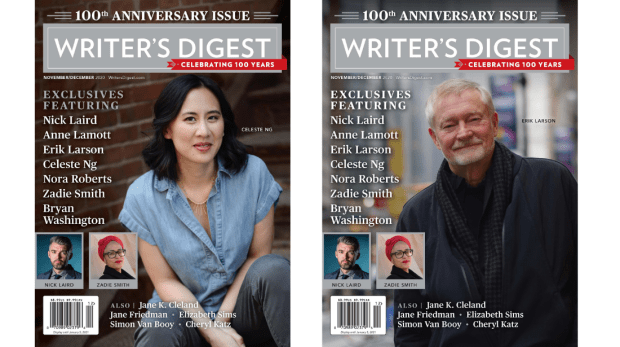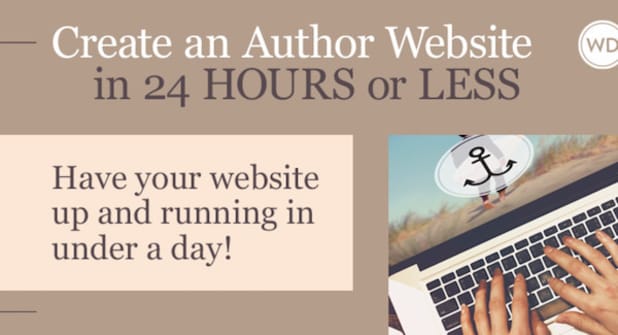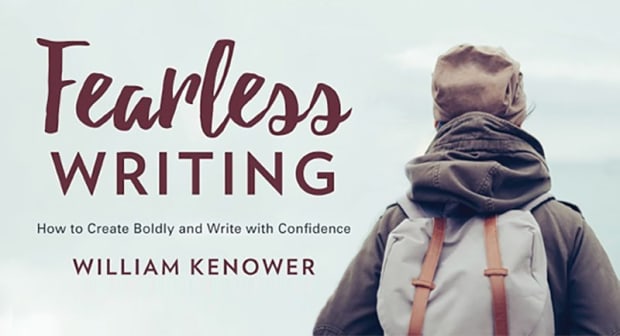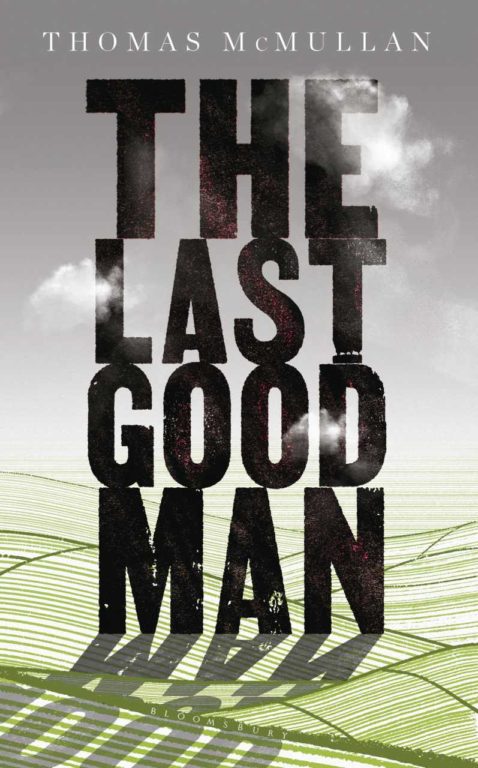Lynne Tillman’s new novel is Men and Apparitions, the looping, kaleidoscopic, and often hilarious monologue of a cultural anthropologist with an academic interest in family photographs, gender, and images. The novel is published in the UK by Peninsular Press.
On behalf of Granta, Emily LaBarge spoke to Tillman about photography, memory and what can’t be narrated.
I read that you shared a flat with the writer Heathcote Williams when you lived in London many years ago.
Yes, Heathcote and his wife, Diana Senior: for over a year we squatted a house on Westbourne Park Road. Very much of that moment.
In Men and Apparitions (M&A), Zeke also travels to London and Europe, a revelatory experience for him in terms of beginning to recognise his identity, which includes his nationality – his Americanness.
Zeke and his then-girlfriend Maggie go to Europe on holiday after they finish their PhD dissertations. My version was . . . getting away from my family for as long as possible and getting out of the States. I had also inherited the romantic idea from so many American writers of the early twentieth century, who went to Europe to find a place to write, to get away from America into the cultures of Europe, particularly Paris and London, T.S. Eliot being there.
Taking Zeke to Europe, first London and then Germany, I allow him to have very ‘other’ experiences. He is in a particularly vulnerable state, his defenses down, and things happen that would not happen at home. It’s one of the interesting aspects of living in one place then moving to another, which is what it was like for me when I moved between London, Amsterdam, Paris. In a foreign country, you feel other parts of your mind, or just other aspects of yourself emerging, because you are separated from the repetitive or the habitual that you do in what you call ‘home’.
Zeke is interested in ‘the New Man’, men who have grown up in post-women’s movement environments, and in how this experience might be reflected in their values and relationships to gender and equality. Can you say something about the genesis of Zeke’s character, and the other concerns and concepts you were grappling with in writing the novel?
I started working on M&A around 2008–2009, so it was about a ten-year project. I was interested in a sentence we’ve been hearing for many years: ‘we’re living in a glut of images’. How do you tell the story of living in a glut of images? And who would tell this story? My last novel, American Genius, A Comedy, was told from the point of view of a fifty-year-old woman, so I wanted to flip to a male narrator. This allowed me to get into my second set of thoughts, which had to do with men, masculinity, and changes in men who I was noticing. I have lots of male friends, aged twenty-five and up, and was very aware of the way younger men were dealing with questions around their masculinity and relationships with women or me. I realised that, post-women’s movement, a lot of them had feminist mothers. There were also many divorces from the 1960s on, so these people were growing up in a different zeitgeist. Having a male narrator, who is a cultural anthropologist studying family photographs, allowed me to bring all of this together. Zeke is curious about the image of men and how men image themselves. You see him throughout the novel trying to have different personae. I decided I would also do an ethnographic study myself, for him, and that became ‘Men in Quotes’.
Zeke’s voice is a huge part of his character – his consciousness, his thought process really is the narrative. In M&A there is a constant shifting: Zeke knows something and then all of a sudden this knowledge undoes itself; even your sentences do that. How do you use consciousness to construct a character who is also in the process of recognising that the self is relational and fluid?
I believe I do know characters by the way they think, which produces how they act and what kind of things they do. Zeke is in a certain place at the beginning of the novel: he is being undone and then he redoes himself and then he’s undone again, because he is in a sense using his theories, his ideas about human beings, to defend against his own ignorance about himself, or his ignorance about the world, which isn’t more than other people’s: we cannot predict what is going to happen, we live as if we can. When I’m reading Natalia Ginzburg, or Virginia Woolf, or Henry James, the consciousness of the characters makes those novels exciting to me. Zeke’s thought patterns, how he uses theories, all come to be part of his world, and it gets shaken. Also, I believe that what you study is always also psychologically determined, that we choose to study and be involved in things that are problems for us in some sense. Things that we love, things that we hate – we need to crack it open. That’s part of what I wanted to happen to Zeke: his intellectual cred is not going to protect him.
Core to Zeke’s voice is his sense of humour, which is self-conscious, sometimes deliberately corny, performative, but also genuine, as if it is an armour against seeming too serious or vulnerable. It is also very funny! Particularly his rhythmic, sometimes laconic speech and comedic timing.
Rhythms create propulsion, dynamics, and though M&A has a plot, in its way – it’s not an obvious one – the novel relies on rhythms. From fast and funny, to sombre, to colloquial, to theoretical speak, say. And I like jokes. Jokes are stories, and, as Freud told us, structured like dreams. Zeke does rely on humour to defend himself, to avoid being wrong, not to be vulnerable. In the US, ‘you know’ and ‘like’ are ways people can avoid making assertions. The English have the all-purpose ‘I don’t mind’, which took me a while to understand when I lived in London. Indefiniteness opens a door called ‘I don’t want to be rejected or wrong’. Zeke is funny and sad, he does stuff that is weird, comical, and upsetting. He’s alert and he’s not. He doesn’t see what’s before him. Photography is not only about looking, it’s about seeing, what you see. He looks but often doesn’t see.
Are there parallels between anthropology and narratology, or storytelling?
I studied Sociology in graduate school, not because I wanted to become a Sociologist, but because I wanted to study more. I had done English Literature and American History, as well as Studio Art in College, but I wanted to study new ideas and theories. In the Sociology department at CUNY (City University of New York) Graduate School, I read Michel Foucault, Hélène Cixous, Erving Goffman, Max Weber. Clifford Geertz and James Clifford – to whom Zeke often refers in M&A – both of whom were involved in how Cultural Anthropology is storytelling.
When an anthropologist goes out into the field, they hear stories, and they base their conclusions about cultures and societies on these stories. I’ve always felt that a story is a way people think, and I wanted to use that. Zeke knows certain things, on an intellectual level, and by knowing them he thinks he’s not part of them. In his own field, though, he becomes part of the storytelling. He tells his own stories through his theories. Zeke’s family is full of stories. The story of Clover Hooper Adams, his family story, which his mother is so intent on propagating. These are stories, and stories are true. Whether they’re factual or not is something else.
I read that someone once told you your characters didn’t speak like people in the real world, and you said something like, ‘they speak like people in the world I want to live in’.
The trouble is that people think there is a ‘reality’, and some sort of naturalism or realism asserts that reality. Yes, my characters speak to each other and say what people wouldn’t usually say. People also don’t usually write books! If you read Jane Bowles’ Two Serious Ladies, one of the great novels of the twentieth century, her people talk in ways that you don’t expect. People in D.H. Lawrence talk in ways you don’t expect. In Kafka’s novels, people do things you don’t expect, events happen you don’t expect. There is a notion that the expectation should be satisfied, when in fact the expectation exists only because it’s been repeated, again and again and again. People can have all sorts of conversations, and I do have all kinds of conversations, and hear people say things that are usual and very unusual. And what do you reproduce, what do you represent in your fiction? Yes, for me it’s what I’d like to hear and that suits my characters. Also sometimes it’s what you wouldn’t like to hear.
My expectations, my hopes, when I read are to find what I don’t expect. To be in a world that I don’t necessarily understand or have a grasp of, not to see myself in a mirror. A friend once recounted a conversation he had with another friend of his, a guy from Texas who didn’t know very much about art. The Texan saw one of Andy Warhol’s Campbell’s Soup can works and said to my friend, ‘God, this is stupid.’ And my friend said to him, ‘What you expect to see there is just as stupid.’ Which may be one of the best art criticisms I’ve ever heard. It’s a fantastic way of understanding the work of the expectation and the stereotype. People write in ways that continue stereotypes, and often don’t even know it.
In M&A, fiction and non-fiction blur or are interspersed: in between Zeke’s stories and reminiscences of his family and his life are digressions – almost mini-essays – on a variety of touchstones including anthropology, photography, television, literature, political events, true crime, vernacular American culture, and more. How do you think about the weaving of fiction with non-fiction, and how did you go about creating this specific world of Zeke’s?
Narrativizing intentions and ideas is the work in a novel. Novels and stories can address the period and conditions we live in, or think about. Flaubert’s Sentimental Education does that so amazingly, Ginzburg’s All Our Yesterdays, also. Consciousness – sensibility could be added, though it’s a different flavour – builds in a time, your time. Memory, history and the present all live in characters, create them. I wanted to make that much more present. How do characters come about? For me, it’s what they think about, what and who they encounter, their backgrounds, educations, almost never what they look like, and mostly not what they say. I don’t use much dialogue, but when I do, it’s pretty strange stuff. Writers often rely too much on dialogue, in my opinion, to build their characters. An all-dialogue novel is different, that’s another form. What people say, what they think and do, can be and are extremely different. I like contradictions, people are tricky.
As for the mini-essays, as you call them: with M&A, I dared myself to be more daring than in previous novels, and expand my palette. Zeke is a cultural anthropologist, an uneasy one, and interested in families and photography. It’s all on his mind. And being a ‘man’. So he can expostulate, theorize, which was fun for me, and it’s ‘natural’ for his character. Also he’s a professor. Sometimes they can’t stop professing. Those touchstones you mention are necessary for him, because even if you didn’t live through them, they mark time. And novels hold time.
Zeke often speaks of his childhood and speculates about his formative years. At this point in his life, why is he looking back to his family and his ancestry? What is he hoping to understand, to remember, or to not forget?
In part it’s about recognising mortality. When you come to think about the fact that you will die, you might find comfort in the idea of continuity, and in having a family history. But it’s a curious thing: Zeke is on the threshold of a very different time, when parents are not going to have actual photo albums anymore, or if they do, they will be scant, or held in some virtual space. So when he finds photographs of a family that have been thrown out, it’s very striking to him. He recognises that they had done all of this work of preservation, and then it all gets discarded.
A human being’s childhood and period of dependency lasts a long time, particularly if you compare it with other animals that need to learn self-sufficiency immediately in order to survive. I don’t know if that period of dependency is understood well enough – to understand what, as human beings, that period of dependency does to us, and how vulnerable we felt. Some parenting is better than others, but everyone experiences stuff we don’t remember, and that dependency, say, is part of your psyche. That fascinates me.
Photography plays a huge role in Men and Apparitions, from Zeke’s own family album, to the many contemporary photographers who are mentioned. Zeke takes a class in which his professor urges him to consider photography itself as a way of seeing, of discovering the unseen. ‘You are seeing with your guts wide open to the sweet pain of an image that is part of your life,’ the professor says.
I don’t have an overriding theory or position about photography’s place in this world. We live in it, and can’t now separate from its effects. Loving images, falling in love with an image, the way an image is produced with a photograph. The way it can fake and be true to itself only. During this Covid-time, images on screens substitute, and don’t, for contact. Maybe this will affect how images, different from photographs, will affect our thinking.
‘Seeing with our guts wide open’ is such a romantic idea, similar to when writers say ‘I write with my guts’. To me that’s hilarious. I don’t think I’ve said this before, but photographs have a specific meaning for me. I was the youngest in my family, much younger than my two older sisters. I had a need to know what I didn’t live through, and often looked at family pictures and the family movies my father shot. I’d stare at them, strangers to me. I set up the projector to watch the little movies of the time before I was born. ‘Before I was born’ has a poignance to me. You can join that to my interest in history. It wasn’t nostalgia, but a desire for what I didn’t know.
Photographs can elicit a present about a past, you see it these days. Great photographers make pictures, which are different to me from records of faces and events. A picture assembles other realities. A picture is a way of seeing, to paraphrase John Berger, which can disrupt what a viewer has seen. It opens up sight to other registers. It does amaze me that photography came about. Why did its inventors think it was needed, what were they looking for? Photography implemented the image of the US, especially to Americans. And the two developed in the same time.
Zeke is interested in the ‘inenarrable’, what can’t be narrated, and also what is not pictured in family photographs. He speaks of secrets as ‘the family contract’. Throughout the book, his secrets – and the secret annals, shames, tragedies of his family – come out in fits and starts, but it still feels, particularly in his voice, as if something is wrong or being held back.
Shame is powerful, and operates harshly in psyches. People write about desire, but most desires are kept private. What gets told, that’s different. Let’s say, secrets are symptoms of shame. I found the word, ‘inenarrable’, and was grateful, because it did what I needed. What can’t be narrated? It’s an abstract idea. But dreams and jokes speak to it. The unsayable. Pictures are inenarrable. I do it, project into them, and make a story. But they don’t ‘tell’ stories, they let us tell stories. And silence, it comes out of all of this. Zeke’s sister, he calls her Little Sister, suffers from the inability to speak. There are reasons – women are silenced. But I wasn’t thinking only about that, but also other ways of ‘talking’. Not speaking is also a form of dissent.
Zeke is also interested in the discarded, what he calls ‘the rejectamenta’.
I was fascinated by how much gets thrown out, and how we live in a world in which people want to acquire. We’re trained to be consumers from jump: you buy something and then immediately something else comes along that replaces it, so you throw out the first. The idea of holding onto something, especially now with the cyber-world where things can be held forever in an invisible space, has altered significantly. We are now virtually hoarding, which is the opposite of rejecting. Purging and hoarding are both contemporary phenomena: those poles are so compelling. What does Zeke hold onto? He has these photographs of other people, his family photographs, and also images of specific people, like the image of Clover Hooper Adams, who was a photographer. The dialectic between holding onto and throwing out seems like the dynamic of the world in which at least I live.
You have spoken about writing ‘alongside’ or writing ‘to’ art, which is something the filmmaker and writer Trinh T. Minh Ha has said too – she writes of ‘speaking alongside’ or ‘nearby’ a subject. You also once told me that she has described her work – when asked the blunt ‘who is your audience?’ query – as being ‘for sensitive people’. This is a broad, beautiful way of speaking about sensibilities rather than content as something that generates a kinship with reader or viewer. Whom do you want your work to be for?
Great imponderables. Wittgenstein said, ‘Don’t explain, only describe’. A description can’t avoid opinions, judgments, because words denote and connote. But ‘writing alongside’ or ‘to’ attempts to be as much a subject as the object being described. In other words, why I developed writing to art the way I did was to foreground writing as writing. Like photographers have to get rid of the idea of a photograph as a window into somewhere else. Minh-Ha is an exceptional artist and intellectual. When I heard her answer (I was in the audience), ‘I make films for sensitive people’, I beheld a brilliant response to a belligerent questioner; he asked, ‘Who are your films for?’ Her answer made the question irrelevant. For sensitive people, she said. They can be any group, class, sex, gender, nationality etc. How beautiful. A different kinship. But whom do I want my writing to be for? Wow. People who care about writing. People who feel troubled by life. People who want to find more joy. And, yes, I suppose they can be called sensitive people. Thank you, Minh-ha. And I hope there will be more of them.
Zeke ends his ‘Men in Quotes’ anthropological study by saying that he will necessarily have selected that which appeals to him: ‘Unwillingly I participate in everything I may want to change. And, everything I am, and may not want to be’. There is a sense throughout the book that he is battling inheritance – family inheritance, ideological, cultural inheritance – while also trying to balance his identity as both an individual and as a member of a community (be it of academics, or of twenty-first century men). How do we challenge our inheritances, or are we to some extent forever beholden to them?
I love the way you said that. Inheritance, yes. What isn’t, in some sense? Born into everything, with little choice. Yet people try to find a way to be a self of their own. With all the issues about a ‘self’, if it exists, people still want to have one; they don’t usually imagine themselves a bunch of random bits, an assortment that really isn’t anything; friends expect each other to be consistent, which aligns with wanting a ‘self’ for others, at least. Inherited traumas certainly were on my mind. There’s fascinating work being done on how trauma travels generationally. In the DNA, also. What is the desire to avenge the past, to protect it? That fascinates me. I’m fascinated by so much that appears ‘natural’, and why? I think often about evolution, and how humans as a species are evolving, or will, and why. What do new patterns serve? What are we preparing for, unconsciously, or because of changes in our DNA and more? If I want to hang around, and often I don’t, it’s because I’d like to see this unfold.
I heard that you are writing an ‘anti-memoir’! Is this true? And what does it mean?
I’ve been told not to call it an anti-memoir. I don’t know what it is. Memoirs are made up of stories writers tell about their lives and themselves. They have to be, in part, fictions, because memory is weird and because writing is not life itself. I don’t want to tell people the same stories, because they bore me to tell them again. People ask writers, the more books you write, the more questions you get about ‘How did you become a writer’, and making it up, your life, starts there. I do want to be honest, and that includes not being certain. Lately, I’m not able to concentrate on this project, because I know the stories. When I do write it, I recognize how much I don’t recall. That’s why I want to say it’s an anti-memoir, and focus on the ambiguities, my constructions. Sometimes I have no idea if it is a memory, a dream. Many people feel that. And I can be wrong. Wrong about what happened. Or it’s my point of view only, not another’s. That’s why fiction is true. It allows for that.
The post Interview appeared first on Granta.









